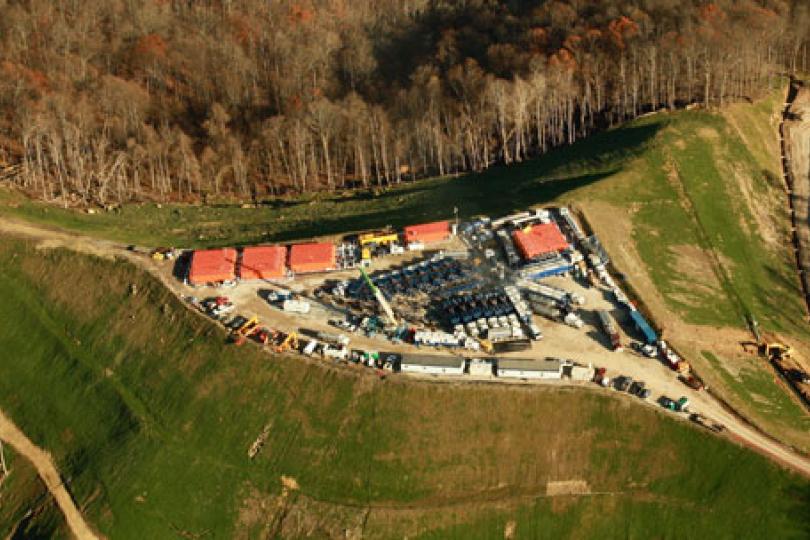Fracking moves closer to homes, schools and other sensitive sites in the Marcellus Shale region
Editor's note: Two Switzer fellows collaborated on this project. Evan Hansen, with support from his team at Downstream Strategies, took the lead in the GIS proximity analysis and drafted the final report. Lara Cushing characterized information about the toxicity of the chemicals used in fracking operations near schools and upstream of public drinking water supply intakes. Lara and Evan worked closely with SkyTruth, which took the lead in creating a web-based application for delineating well pads and impoundments based on aerial imagery. We welcome input from the Switzer Network on the findings summarized below and look forward to future collaboration.
In the past decade, natural gas drilling and extraction from the Marcellus Shale in West Virginia have proliferated rapidly. The technique of hydraulic fracturing, or “fracking,” has allowed for the extraction of gas from areas that were previously not economically viable. In comparison with conventional gas wells, the impacts of fracking are also potentially much greater. Fracking requires the construction of large well pads. These well pads often house multiple wells drilled over a few years and produce significant amounts of solid and liquid waste containing toxic chemicals. In recent years, the public health and medical communities have expressed concerns about environmental issues and the potential for adverse human health impacts in communities located near fracking activities.
In this study, we explore whether gas production has become more prevalent near where people live, work, and play, increasing the potential for human exposure to contaminants associated with drilling and natural gas extraction. First, we map and measure the footprint of Marcellus Shale gas development in West Virginia between 2007 and 2014 to evaluate the extent to which drilling has expanded near sensitive land uses such as homes and schools. Most prior studies of the growth of unconventional gas extraction utilized location information from permit data. Our approach using aerial imagery more accurately reflects the actual timing and extent of well pad development. Second, we characterize the toxicity of a set of chemicals used to frack wells near sensitive populations to understand the potential for harmful exposures. We found the average size of well pads in the area grew over time and an increasing number of homes, schools, public lands, health care facilities, and public water supply intakes are located near fracking operations. Disclosure of the chemicals used in fracking operations is limited. Nevertheless, we found roughly 20% of the chemicals reported near schools and public water supply intakes have been identified in scientific studies as possible reproductive and/or developmental toxicants.
Additional Resources
Media coverage of the report:
A look at fracking in West Virginia, The Dominion Post, 09/16/2017


